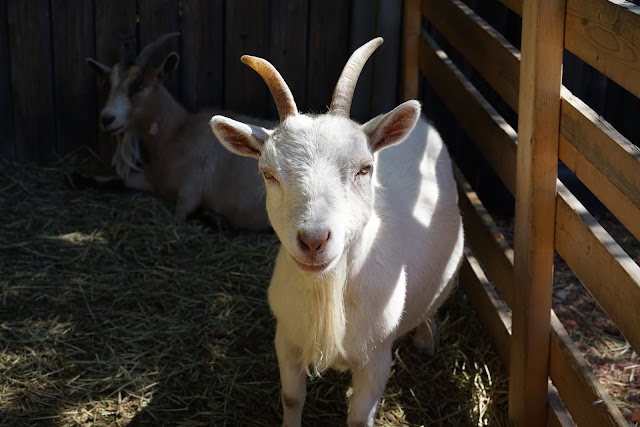Well, yesterday was Canada Day -- Happy Belated Canada Day! I meant to write a blog about a little place in Canada from last summer, but alas, I was tired and just went to bed. So here I am, well rested on a Saturday morning of a three day weekend, writing a late blog about Canada. Fort MacLeod, Alberta in particular.
Like many towns in Western Canada, the settlements popped up around trading posts or forts. In 1874, the Northwest Mounted Police set up a fortification on the Old Man River. The Northwest Mounted Police would eventually become the Royal Canadian Mounted Police, they are the precursors of todays RCMP. So why a fortification rather than a town? Well, in 1874 this wasn't the same Canada we know today. This is an interesting time period for me in my mind. This land wasn't "owned" by any governments or powers we recognize today, but it was heavily occupied. By the Blackfoot, the Blood, the Peigan, and Gros Venture tribes. Further north were the Sarcee and the Slavey. The Crow tribe occassionally came up to pick a fight. Now that I'm older, I marvel at the wisdom of this. People who move freely through areas, landscapes free of permanent settlements, industry. Millions of hectares of what we only see in National parks. I would have loved to have lived in this time very much. But there were hazards...no organized medicine, no laws against killing someone for being in your favorite spot. It might have been a short life. But perhaps a good one. Anyway, the way that this land eventually became Canadian was a bit innocuous. The Hudson Bay Trading Company, based out of Montreal, set up trading posts reaching further and further west. One more small group of people in a big land, making beneficial trade with the local tribes. But as politics go, certain tribes formed tighter associations with the Hudson Bay Trading Company...the Cree and the Assiniboine, in support of and being supported by the vast trade monies of the Hudson Bay Company, pushed out some of the other tribes. And humans, being schmucks, decimated the buffalo, overhunted the fur market, and created violence in the region (trade for whiskey, what could possibly go wrong?). On June 13, 1870, the government of Canada (over a thousand miles away and pretty much sight unseen) took possession of all the Hudson Bay Company's territory, including this area which is now the province of Alberta. They lumped it in as "the Northwest Territory" of Canada. In 1874, Canada announced a booze ban in the area and marched out the Northwest Mounted Police and build this fort (well actually, the river swelled and they moved the fort to higher ground so this is actually the 2nd fort, but you get the idea). Land treaties were given out to the local tribes, who are probably still wondering how exactly the Hudson Bay Company, which is actually in England, managed to sell off the land they've lived in to a bunch of other English people in what is now Ontario. I love my Canada, but this does seem a bit dodgy in retrospect.
Anyway, Fort MacLeod was set up to establish presence, to bring law and order, and to investigate agriculture. The railway followed, and Fort MacLeod become a boom town until the Canadian Pacific Railway moved to Lethbridg3. Now it's just a small town, snow covered in winter, sweltering on those gorgeous hot summer days in the Canadian Badlands, and a popular spot for school field trips and summer adventures. A museum. A museum with horses for the famed RCMP Musical Ride...and some goats.
Not sure why there were goats. But I loved them! They liked being petted.
And in a moment of brilliance...someone traded out a candy dispenser for a goat treat dispenser.
Not one to miss a hint, I spent every quarter I had.
Here's what it looked like inside the walls of the fort. The barracks, the hospital, the store, the church, and a center square for living and exercise are all within the walls. Outside...was the other world, yet to be assimilated into the culture of Eastern Canada.
A reminder of the leaders who came before.
It's safe to assume this idea was met with some resistance based on the construction.
The local store. Before plastic bags, there was brown paper wrapping.
I think I kind of liked the ladies boots...they really haven't changed that much!
My favorite discover -- the neary 200 year old coffeemaker!
So maybe my musings weren't the best Canada Day tribute. But these forts and acquisitions are part of our history too. Love you Canada. Especially your wildest and least populated parts!













No comments:
Post a Comment